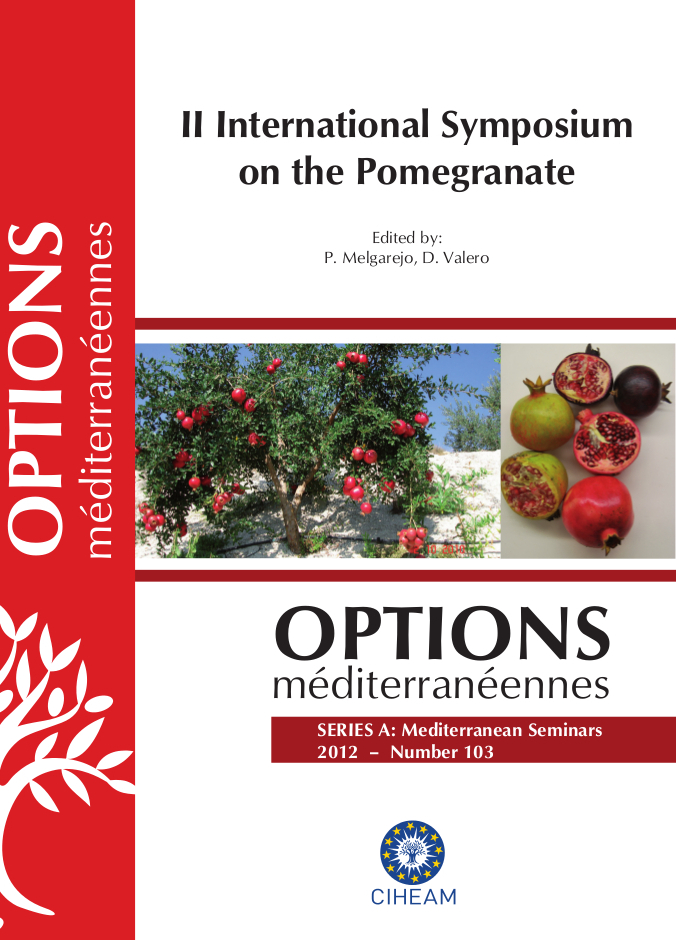| Article précédent | p. 87-89 | Article suivant |
Chemical composition of pomegranate (Punica granatum L.) cultivars grown in Croatia
Pomegranate is among the oldest cultivated sub-tropical fruit species in the coastal part of Croatia, traditionally grown in central and southern Dalmatia. More recently, its fruits have gained interest for their nutritional values. The edible part of pomegranate fruit contains considerable amounts of vitamins,polysaccharides, polyphenols and minerals. One of the most important quality characteristics of pomegranate fruit are the arils and juice, which are primarily associated with anthocyanin pigments. Fruit samples of seven domestic pomegranate cultivars (Barski slatki, Ciparski rani, Crveni rani, Dividiš, Konjskizub, Sladun, and Šerbetaš) and wild pomegranate were collected from a productive pomegranate orchard in Metković (Croatia) (43°01'N 17°65 'E). The results on the main fruit quality traits (total soluble solids, total acidity, total sugar contents, total phenolic content, antioxidant activity and anthocyanins content) indicated significant statistical differences among cultivars.
- [ Afficher ]
- [ Télécharger ]
- [ Exporter la citation ]
Vous pouvez télécharger la citation au format :
- [ Imprimer ]
-
Mots-clés
ACIDITE, ANTHOCYANE, COMPOSE PHENOLIQUE, GRENADE FRUITSCiter cet article
Radunić M., Jukić Špika M., Goreta Ban S., Gadže J., Mac Lean D. Chemical composition of pomegranate (Punica granatum L.) cultivars grown in Croatia. In : Melgarejo P. (ed.), Valero D. (ed.). II International Symposium on the Pomegranate. Zaragoza : CIHEAM / Universidad Miguel Hernández, 2012. p. 87-89. (Options Méditerranéennes : Série A. Séminaires Méditerranéens; n. 103). 2. International Symposium on the Pomegranate, 2011/10/19-21, Madrid (Spain). http://om.ciheam.org/om/pdf/a103/00006912.pdf



